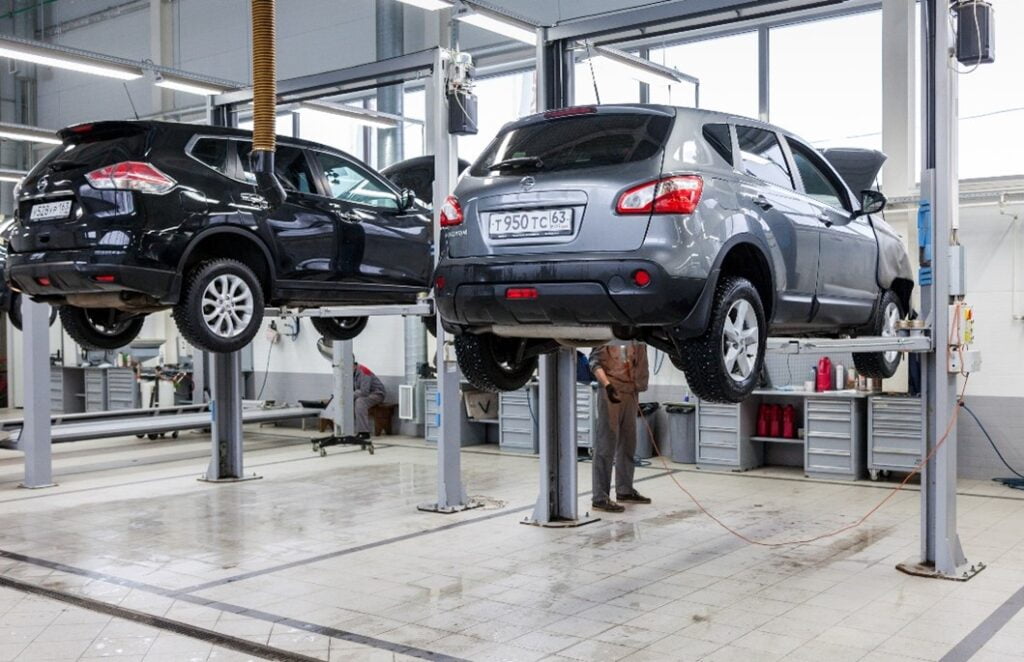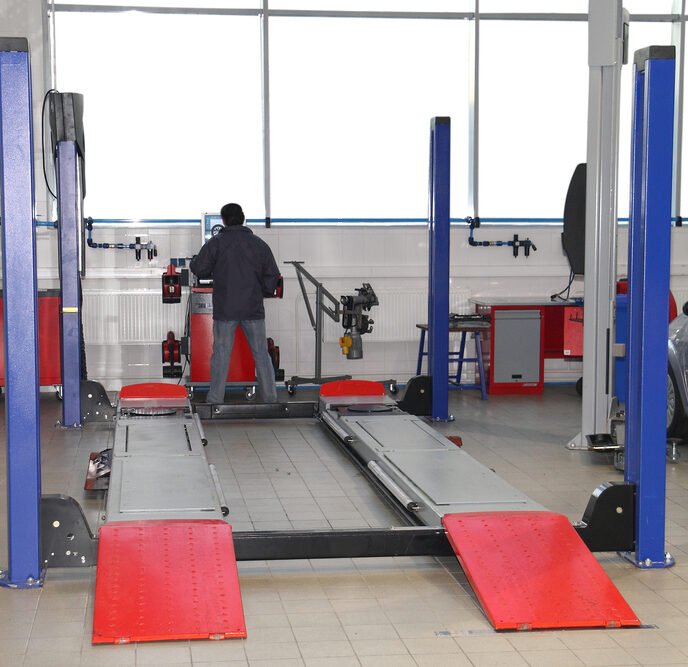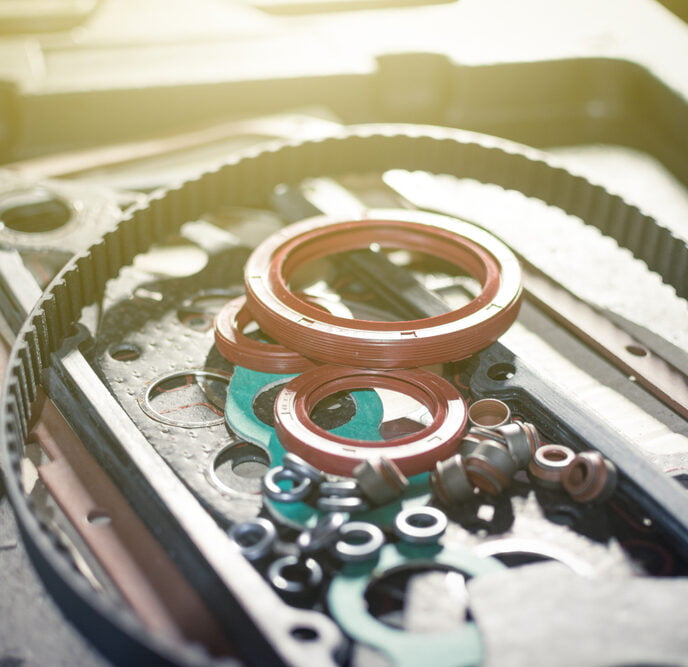What Kind of Hydraulic Fluid Does a Car Lift Use

If you have an automotive shop, or just enjoy working in your garage, then a car lift is likely the focal point of your workspace. A car lift allows you to quickly work on the vehicles and keep a constitute stream of happy customers, or to enjoy working on your fun automotive projects in your garage.
Just like how you enjoy taking care of vehicles, it is also important to take care of your car lift. A car lift, just like any other piece of machinery, needs proper maintenance to run smoothly and efficiently. In fact, a majority of the car lift’s ability to operate comes from its cables and hydraulic fluid level. In order to make sure your car lift stays in top shape, it is important to make sure your car lift is properly lubricated at all times. When wondering what kind of hydraulic fluid does a car lift use, we have these answers and more to keep your equipment working safely and properly. At SVI International, we have all the automotive parts you may need to make sure your car lift stays in top shape.
How to Choose the Best Hydraulic Oil
You may be shocked to know many areas of your car lift needs to be lubricated. For example, many two-posts car lifts need lubrication of their inside corners and latch shafts in order to continue to run smoothly. Lubricating your car lift and maintaining the proper hydraulic fluid level ensures your car lift will not malfunction, causing long waiting lines or, even worst, injured vehicles or persons. As such, choosing the right lubricant is essential to upkeeping your car lift.
To start, lubricant and grease are not the same things. “Lubricant” implies a liquid, while “grease” implies a solid. As a general rule, always select the car lift lubricant suggested by your car lift’s manufacturer. This information can be found in your car lift manual, or you may be able to locate the information by calling the manufacturer’s number or through a simple google search by typing in your car lift’s information online. If you speak with a manufacturer, most will recommend a few different types of hydraulic oils which can be used on their lifts. Below are two of the recommended types of hydraulic oil to help you choose the best car lift to lubricate for your two-post car lift, four-post car lift, four-post roller jacks, pro-jacks, or a mid or low-rise car lift:
- The first brand is called “AW”. AW is short for anti-wear. This is a great type of hydraulic oil for your car lift. First, it protects your car lift from any rust and, or oxidation. Second, it contains anti-foam additives. Specifically, there are two versions of AW available for your use: AW32 and AW46. AW32 is a 10-weight oil after the additives are added. AW46, on the other hand, is a 15-weight oil after the additive is added. Both AW 32 and AW46 are blended with very refined naphthenic/paraffinic base oils. What is great about AW is that you receive all the advantages of a premium hydraulic oil, but at a much lower price point than a hydraulic oil of similar standards. AW32 or AW46 can be used anytime a premium AW product is not specifically called for.
- The second brand is referred to as “R & O.” R & O is short for rust and oxidation. Similar to the AW products above, R & O contains anti-foaming additives. As such, the weight of R & O is 10 weight oil after the additives are added. R & O is appropriate when premium R & O is not otherwise specifically called for.
You can purchase any of these above types of hydraulic oil from your local automotive store.
Per the usual course of maintaining your car lift, you will also need to lubricate your car lift’s chains. As you use your car lift, sand, dirt, dust, and other debris can get stuck inside your car lift’s chains – thus greatly reducing the life and integrity of the chains. For cleaning your car lift’s chain, a spray lubricant is best in this situation. To clean your car lift’s chains, first lower the car lift. You do not want any pressure on the chains when cleaning. Next, simply spray the chain and wipe it down.
How Often Should You Replenish Hydraulic Fluid Levels
First and foremost, you should perform a monthly check of your entire car lift to make sure it is functioning correctly and does not pose a danger to any person or vehicle. Concerning the hydraulic fluid level, also check this about once a month, and fill it in accordance with your car lift manual. Regarding your car lift’s chains, the frequency which you should check these depends on the environment in which you live. Although these will be checked during your monthly check, a lift that is in a dusty, dry environment will need to be lubricated more often than a car lift that is not in such an environment.
SVI is Here to Help
Just like you enjoy taking care of cars, you need to take care of your car lift. By making sure your hydraulic oil is at the correct level, and properly lubricating the car lift’s chains, you can take care of your car lift so, in turn, you can take care of your customers. At SVI, International, we have the automotive parts your car lift needs to stay in top shape. Contact us today to get the parts you need to keep your car lift functioning smoothly.
Questions About Hydraulic Oil for Lifts
Does hydraulic fluid come with lifts?
In short, no. Current restrictions in place essentially require that the required hydraulic fluid can only be supplied by the end-user.
What is the difference between AW32 and AW46 hydraulic oils?
AW32 and AW46 differ in their weights. AW32 is 10, at times called ISO32, and AW46 is 15, at times called ISO46.
What is the most recommended hydraulic oil by lift manufacturers?
Most manufacturers will recommend AW32 and AW46 due to their anti-wear, protection against rust and oxidation, and anti-foaming properties.


